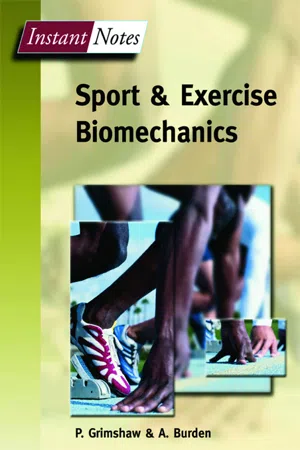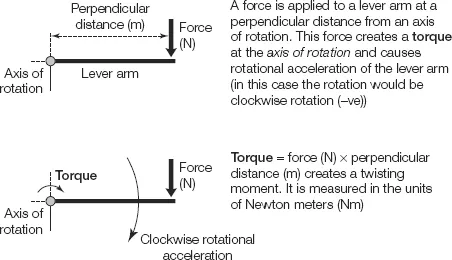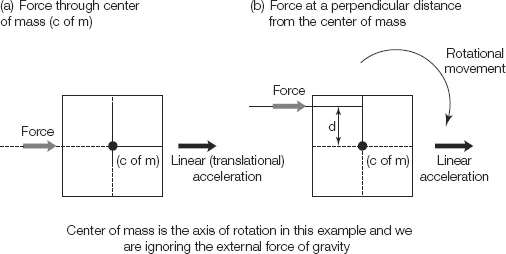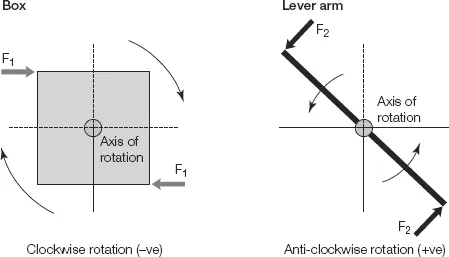
eBook - ePub
BIOS Instant Notes in Sport and Exercise Biomechanics
Paul Grimshaw, Neil Fowler, Adrian Lees, Adrian Burden
This is a test
Share book
- 400 pages
- English
- ePUB (mobile friendly)
- Available on iOS & Android
eBook - ePub
BIOS Instant Notes in Sport and Exercise Biomechanics
Paul Grimshaw, Neil Fowler, Adrian Lees, Adrian Burden
Book details
Book preview
Table of contents
Citations
About This Book
Instant Notes Sport and Exercise Biomechanics provides a comprehensive overview of the key concepts in exercise and sport biomechanics. The kinematics of motion are reviewed in detail, outlining thephysics of motion. Mechanical characteristics of motion, the mechanisms of injury, and the analysis of the sport techniqueprovidesasource of valuable information.
Frequently asked questions
How do I cancel my subscription?
Can/how do I download books?
At the moment all of our mobile-responsive ePub books are available to download via the app. Most of our PDFs are also available to download and we're working on making the final remaining ones downloadable now. Learn more here.
What is the difference between the pricing plans?
Both plans give you full access to the library and all of Perlego’s features. The only differences are the price and subscription period: With the annual plan you’ll save around 30% compared to 12 months on the monthly plan.
What is Perlego?
We are an online textbook subscription service, where you can get access to an entire online library for less than the price of a single book per month. With over 1 million books across 1000+ topics, we’ve got you covered! Learn more here.
Do you support text-to-speech?
Look out for the read-aloud symbol on your next book to see if you can listen to it. The read-aloud tool reads text aloud for you, highlighting the text as it is being read. You can pause it, speed it up and slow it down. Learn more here.
Is BIOS Instant Notes in Sport and Exercise Biomechanics an online PDF/ePUB?
Yes, you can access BIOS Instant Notes in Sport and Exercise Biomechanics by Paul Grimshaw, Neil Fowler, Adrian Lees, Adrian Burden in PDF and/or ePUB format, as well as other popular books in Biological Sciences & Cell Biology. We have over one million books available in our catalogue for you to explore.
Information
Section C – Kinetics of angular motion
C1 | TORQUE AND THE MOMENT OF FORCE |
Key Notes
Torque | A torque is a twisting or turning moment that is calculated by multiplying the force applied by the perpendicular distance (from the axis of rotation) at which the force acts (the moment arm). Torques cause angular accelerations that result in rotational movement of limbs/segments. |
Clockwise and anti-clockwise rotation | Clockwise rotation is the rotary movement of a limb/lever/segment in a clockwise direction (−ve). Clockwise is referring, in this case, to the hands of a clock or watch. Anti-clockwise rotation is rotary movement in the opposite direction (+ve). |
Force couple | A force couple is a pair of equal and opposite parallel forces acting on a system. |
Equilibrium | This is a situation in which all the forces and moments acting are balanced, and which results in no rotational acceleration (i.e., a constant velocity situation). |
Second condition of equilibrium | This states that the sum of all the torques acting on an object is zero and the object does not change its rotational velocity. Re-written, this condition can be expressed as the sum of the anti-clockwise and clockwise moments acting on a system is equal to zero (∑ACWM + ∑CWM = 0). |
Application | Swimmers are now utilizing a pronounced bent elbow underwater pull pattern during the freestyle arm action. This recent technique change allows the swimmer to acquire more propulsive force and yet prevent excessive torques being applied to the shoulder joint (which were previously caused by a long arm pull underwater pattern). Large torques are needed at the hip joint (hip extensor and flexor muscles) to create the acceleration of the limbs needed to kick a soccer ball. |
Torque
A torque is defined as a twisting or turning moment. The term moment is the force acting at a distance from an axis of rotation. Torque can therefore be calculated by multiplying the force applied by the perpendicular distance at which the force acts from the axis of rotation. Often the term torque is referred to as the moment of force. The moment of force is the tendency of a force to cause rotation about an axis. Torque is a vector quantity and as such it is expressed with both magnitude and direction. Within human movement or exercise science torques cause angular acceleration that result in the rotational movements of the limbs and segments. These rotational movements take place about axes of rotation. For example, the rotational movements created in the leg while kicking a soccer ball would occur about the ankle (the foot segment), the knee (lower leg segment) and the hip (upper leg segment) joints or axes of rotation. If an object is pushed with a force through its center of mass it will move in a straight line (linear motion) in the same direction as the applied force. However, if an object is pushed with a force at a perpendicular distance away from its center of mass it will both rotate (about an axis of rotation) and its center of mass will translate (move in a straight line). Figs C1.1, C1.2 and C1.3 illustrates this concept of torque in more detail.
Clockwise and anti-clockwise rotation
In Fig. C1.3 it is possible to see that when a force is applied at a perpendicular distance from the center of mass (which in this example is considered to be the axis of rotation), the box (object) will both rotate and move forwards. The torque that is created as a result of applying this force at a perpendicular distance will cause the box to rotate about its axis of rotation. However, the box will also move forwards (translate) as the force is applied in a horizontal direction. Although the force is acting at a perpendicular distance from an axis of rotation and it will create a torque or twisting moment, it will also have a horizontal component of force acting on the box (because the force is being applied horizontally). When we apply a force at a perpendicular distance to an axis of rotation we have seen that we create a torque or twisting moment (a tendency to rotate). The perpendicular distance from the center of rotation is called the moment arm. The torque that is created causes a potential for the rotational acceleration and thus the resulting rotation of the limb, lever or segment on which it is being applied. This rotation can be described as being either clockwise rotation or anti-clockwise rotation (described by reference to the direction of the movement of the “hands” on a clock or watch). Within biomechanics clockwise rotation is usually given the negative symbol (−ve) whereas anti-clockwise rotation is given the positive symbol (+ve). In many situations within biomechanics it is often the case that pairs of forces act about a segment and about an axis of rotation. Two equal and opposite forces that are acting on a system create what is termed a force couple. The term couple is therefore defined as a pair of equal and opposite parallel forces. Figs C1.4 and C1.5 are useful in clarifying these terms in more detail.

Fig. C1.1. Torque and moment of force

Fig. C1.2. Torque and moment of force

Fig. C1.3. Torque and moment of force

Fig. C1.4. Clockwise and anti-clockwise rotation

Fig. C1.5. A couple: pair of equal and opposite parallel forces
Force couples
In Fig. C1.5 it is possible to see the effect of a couple on two objects (a box and a lever arm). In each example in Fig. C1.5 a couple (a pair of equal and opposite parallel forces) is seen applied to the objects. In both cases the objects (a box and a lever arm) rotate (and in these cases the objects only rotate because the only forces acting on them are equal and opposite – obviously in this example we have ignored the external force of gravity) in both a clockwise (the box) and anti-clockwise (the lever arm) direction. The couples create rotation about the axes of rotation. In these examples in Fig. C1.5 there is no translation (linear motion) because the total net force on the systems is zero (i.e., the forces are equal and opposite). According to Newton’s first law of motion an object will remain at rest or continue with uniform linear motion unless it is acted upon by an external force. In both these cases the net linear force on the objects from the couples would be zero and the objects would remain in the same positions (i.e., they would not move linearly). However, they would rotate about their respective axes of rotation because the couples cause torques and hence a combined rotational effect.
Since torque is expressed as force multiplied by perpendicular distance from an axis of rotation it can be expressed mathematically as follows:

where
F | = | force (measured in Newtons (N)) |
d | = | perpendicular distance from axis of rotation (measured in meters (m)) |
T | = | torque (measured in Ne... |